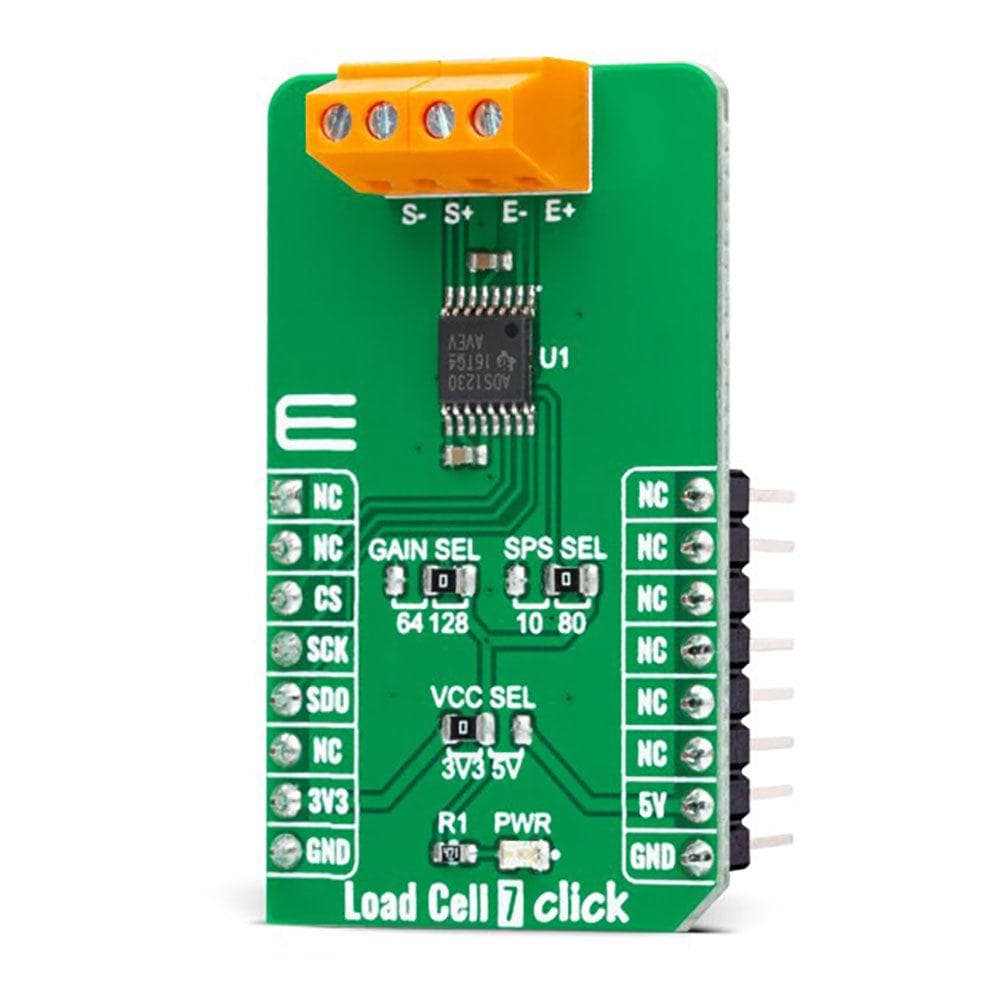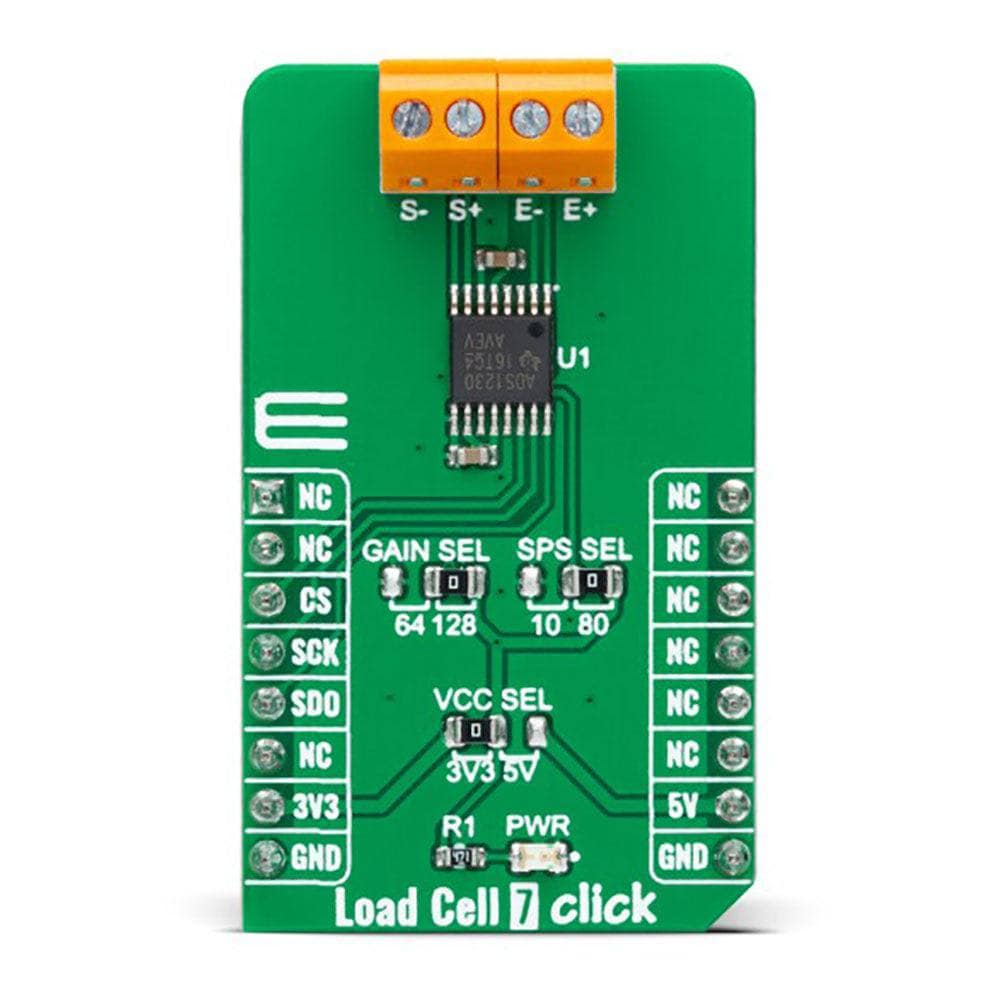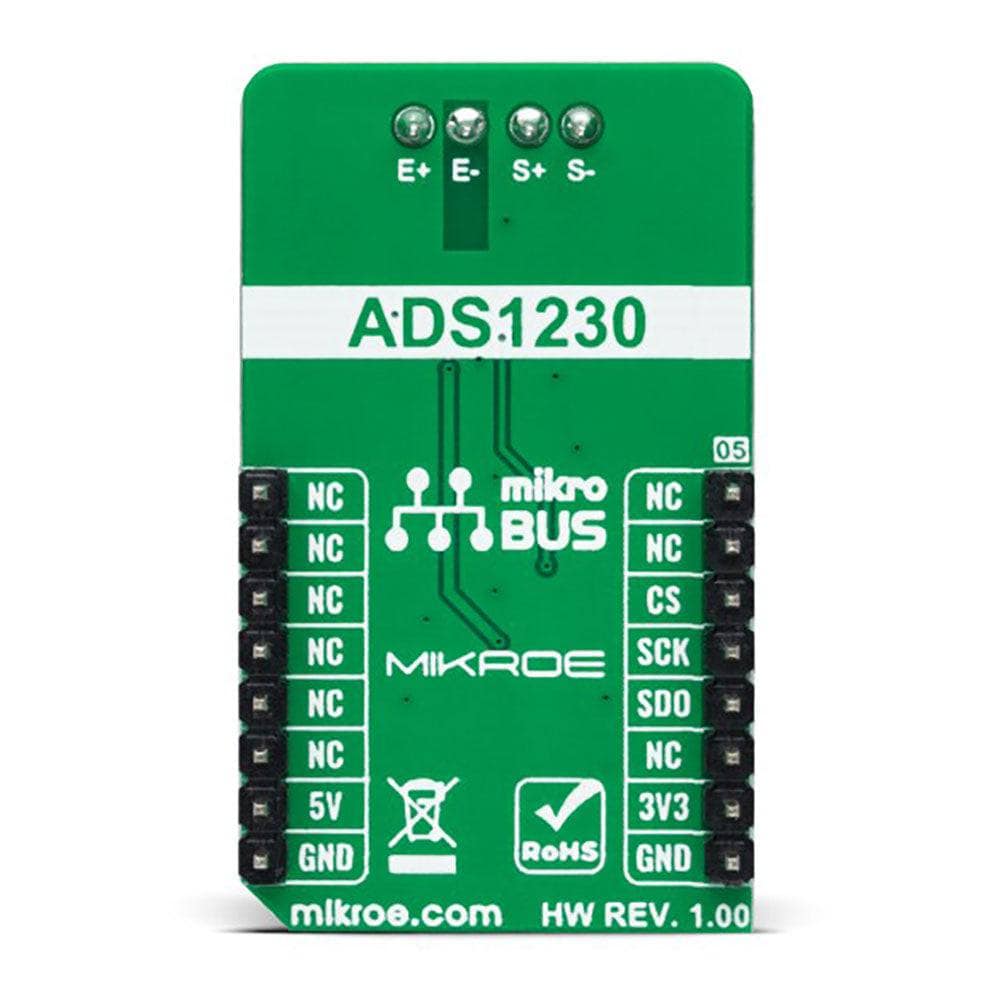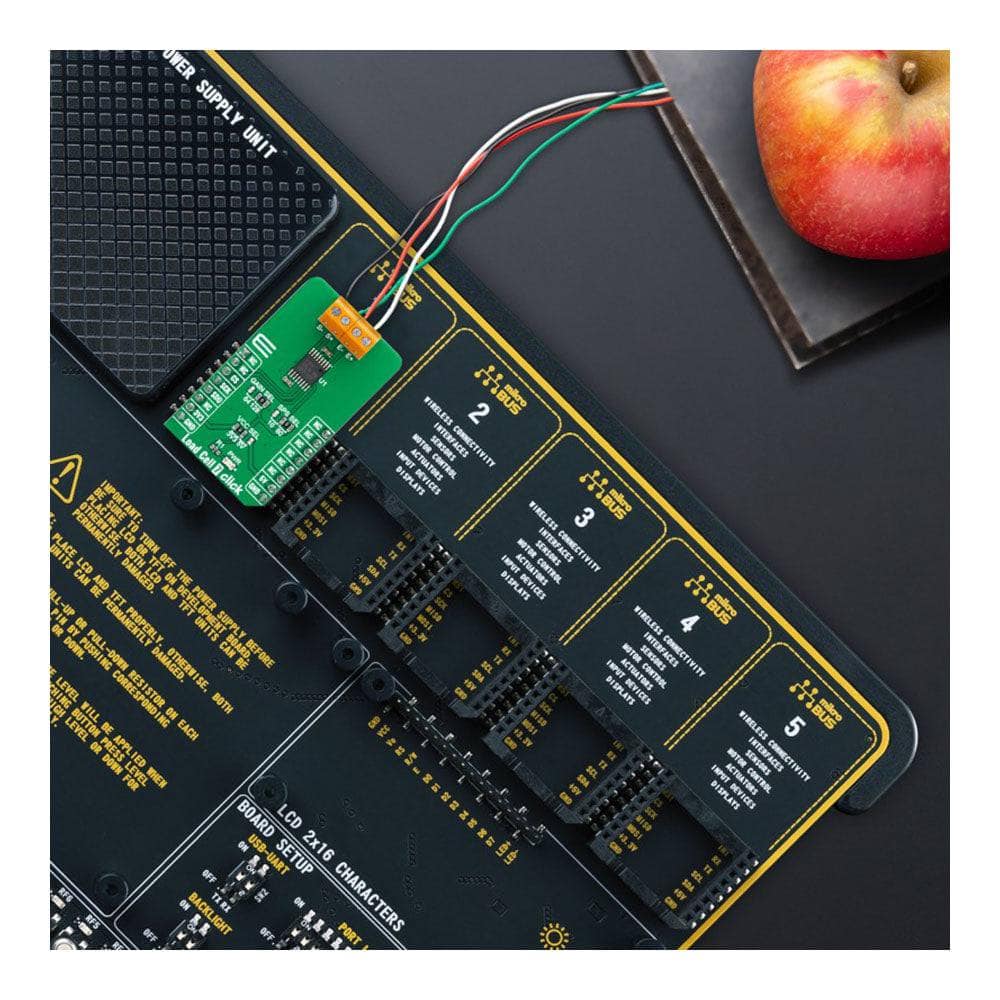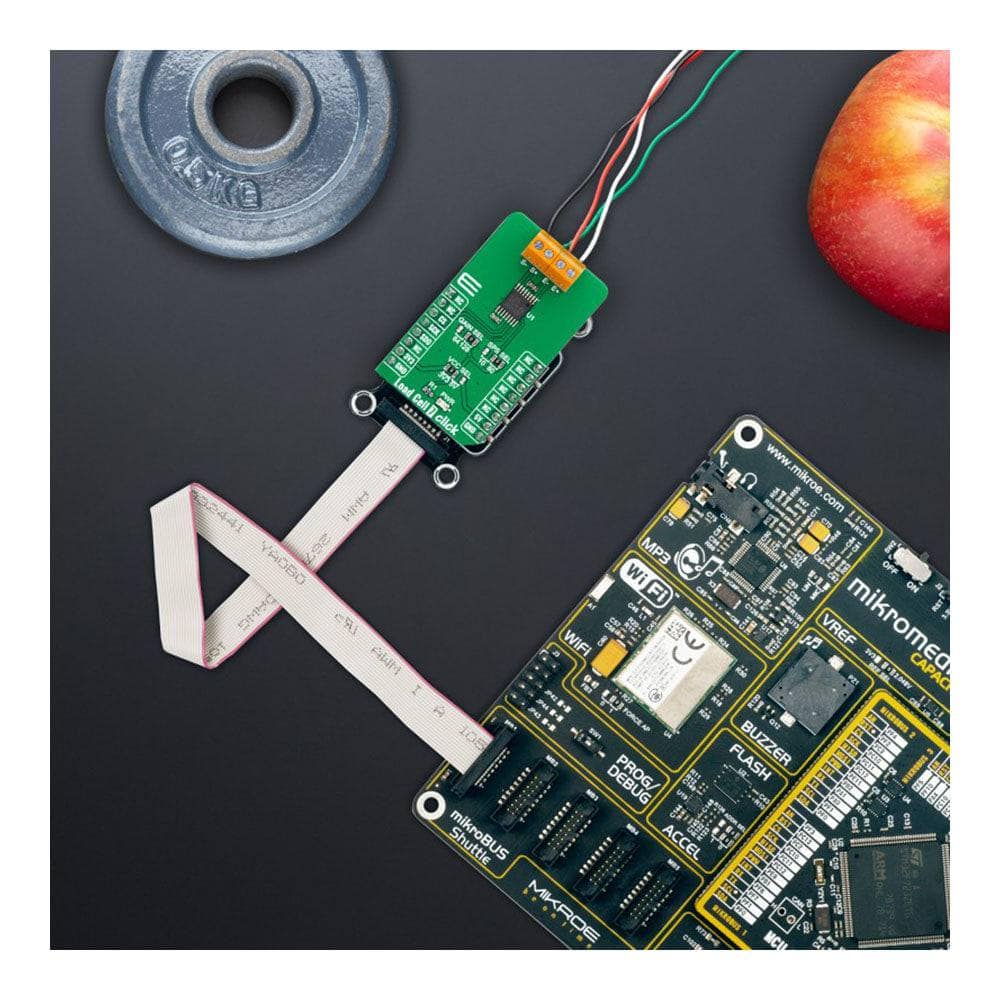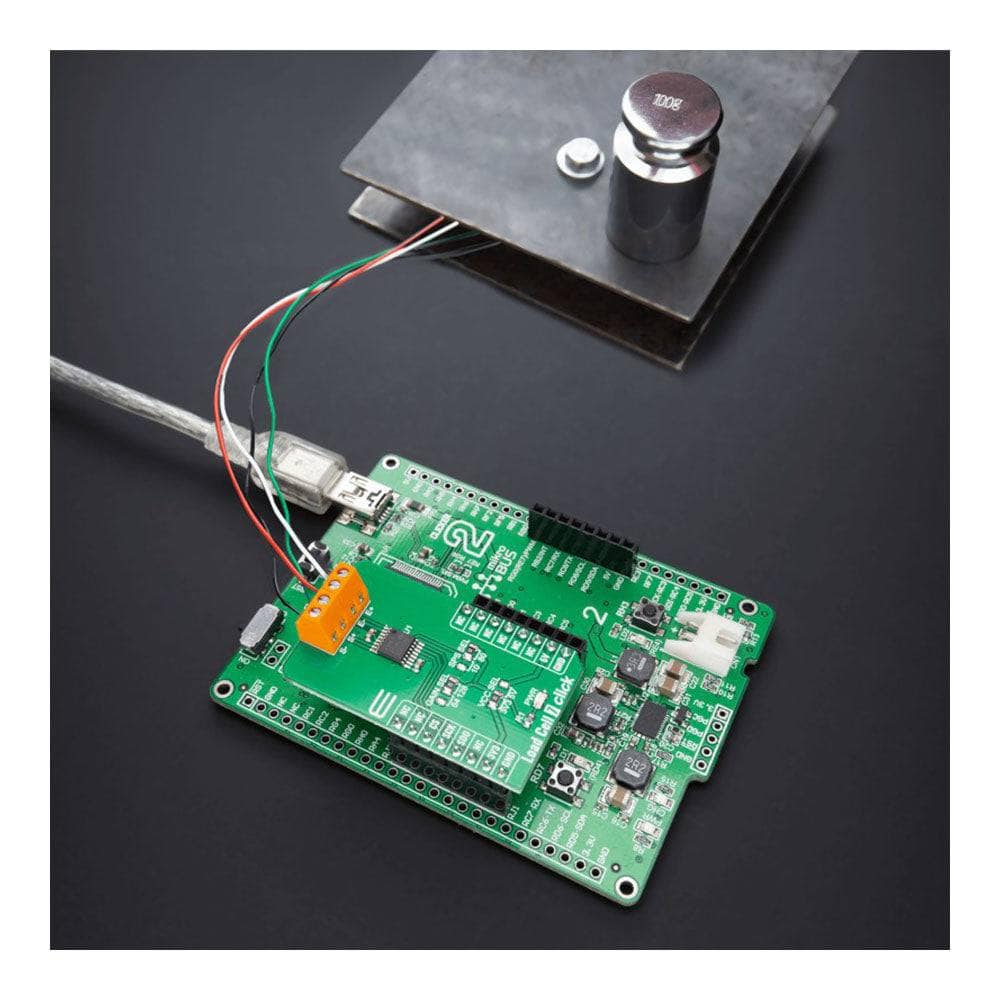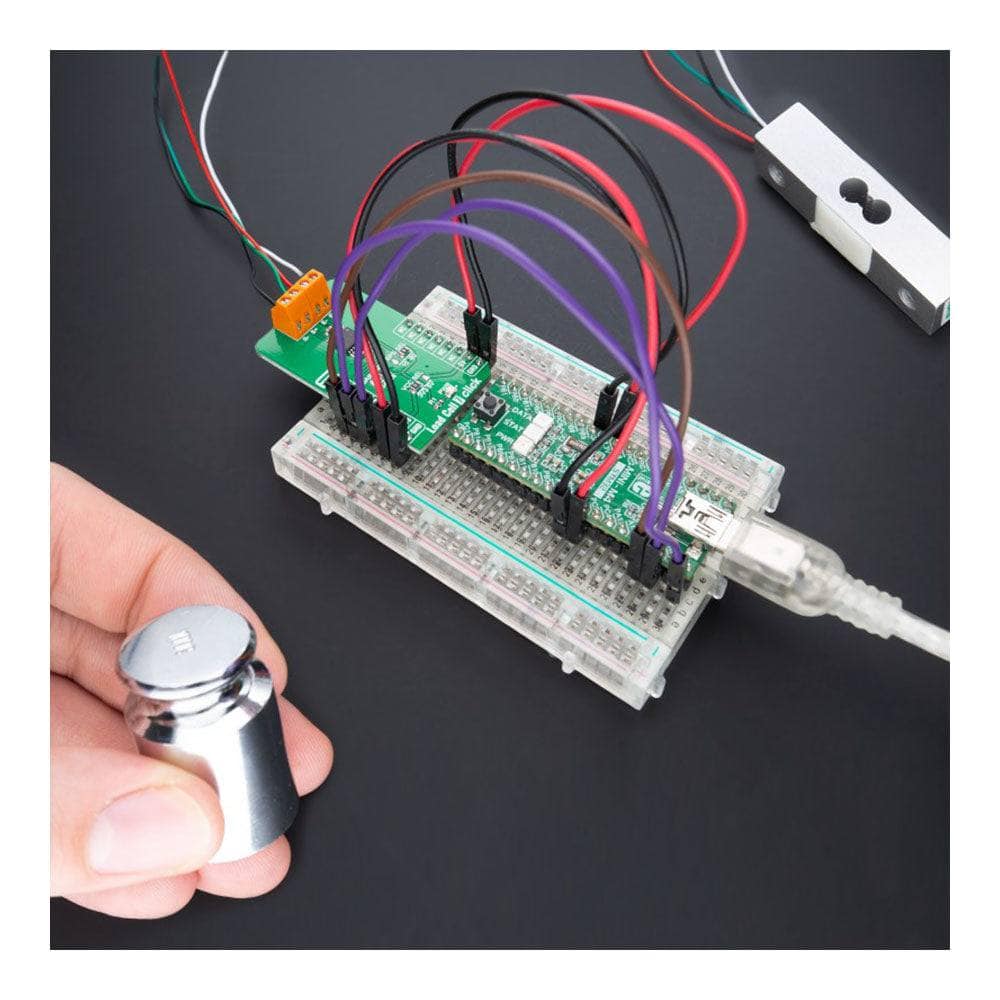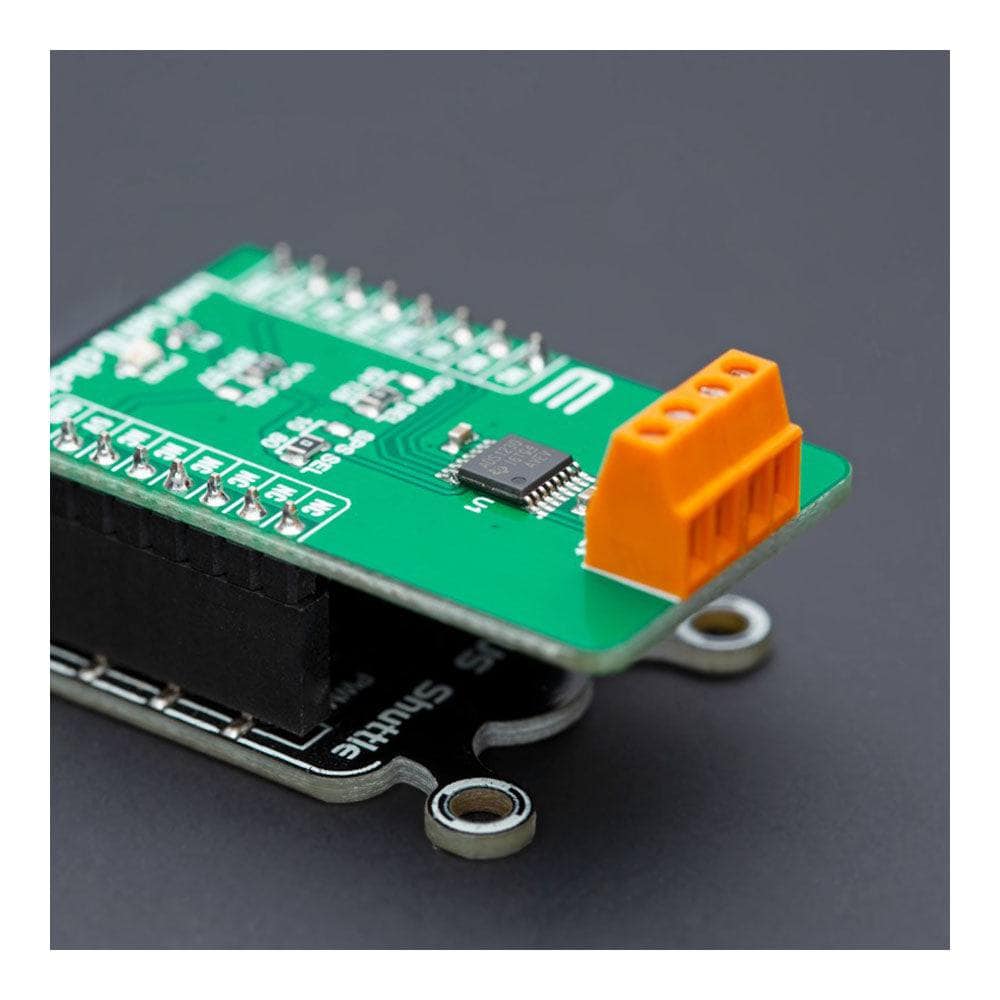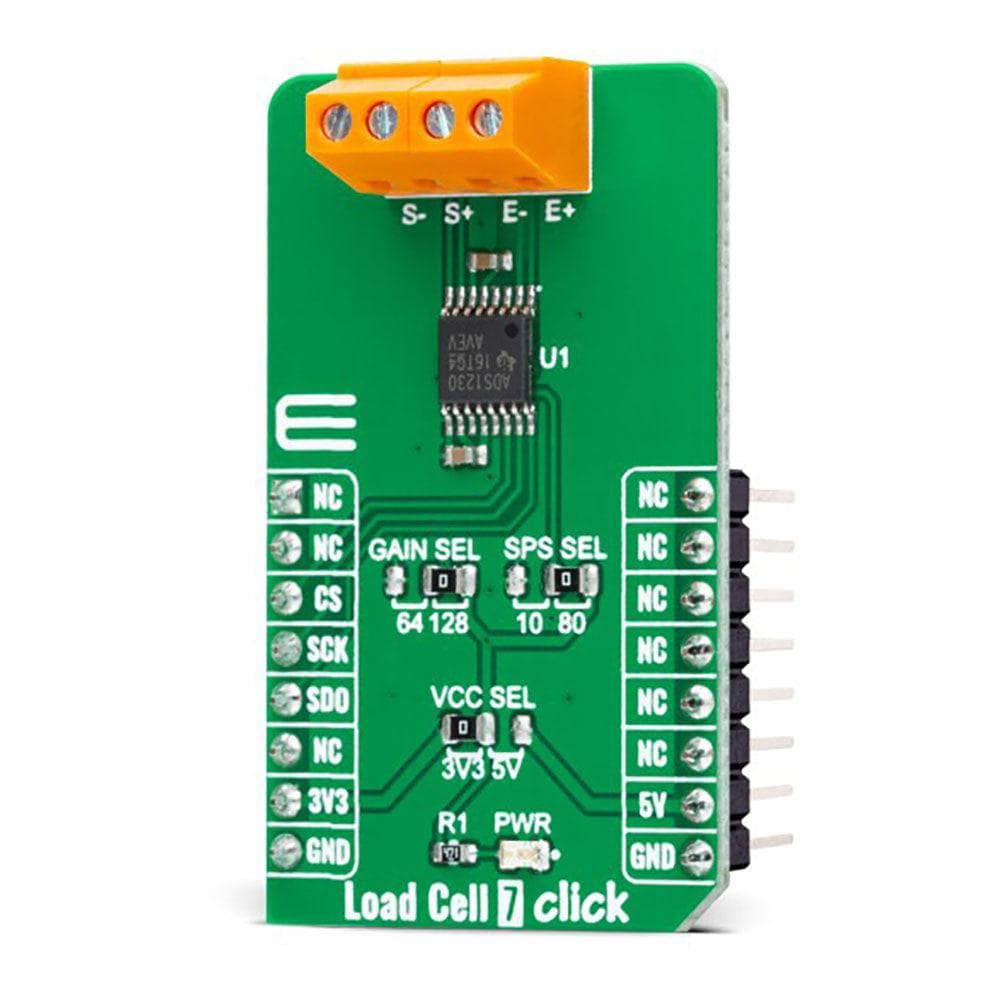
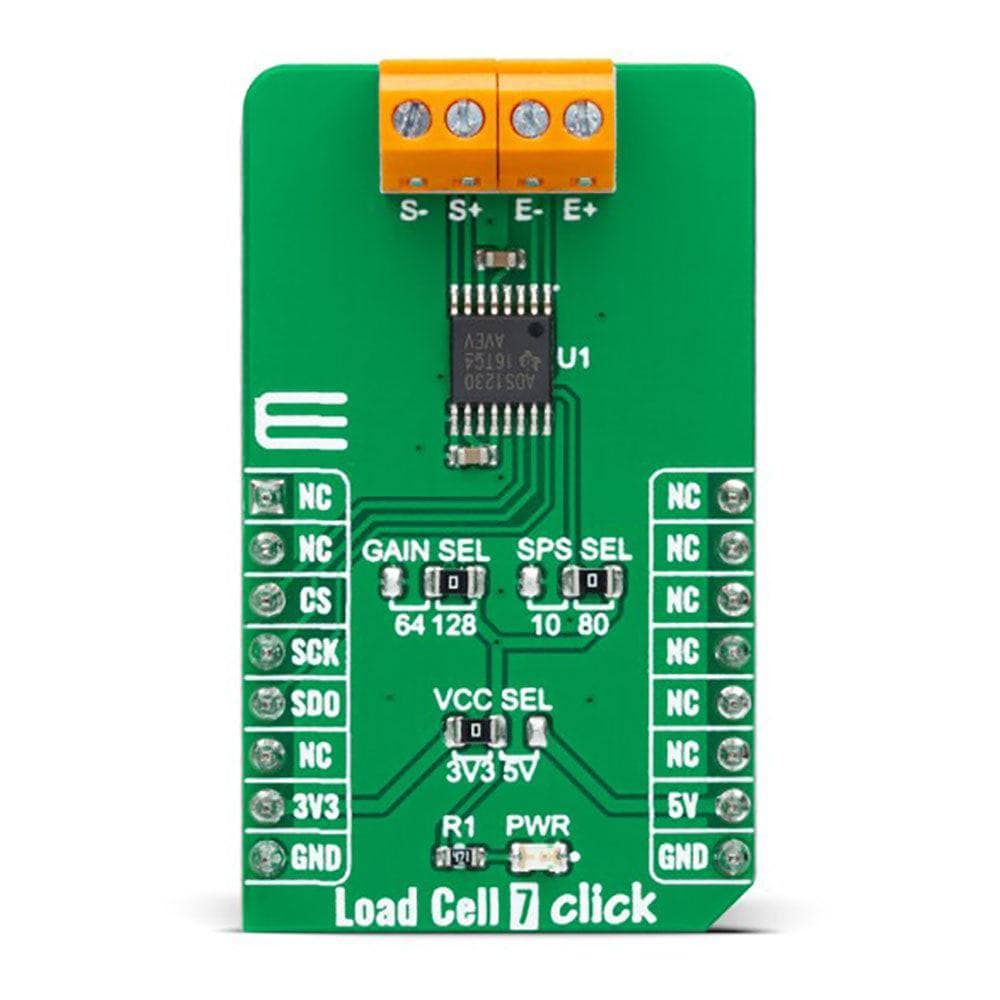
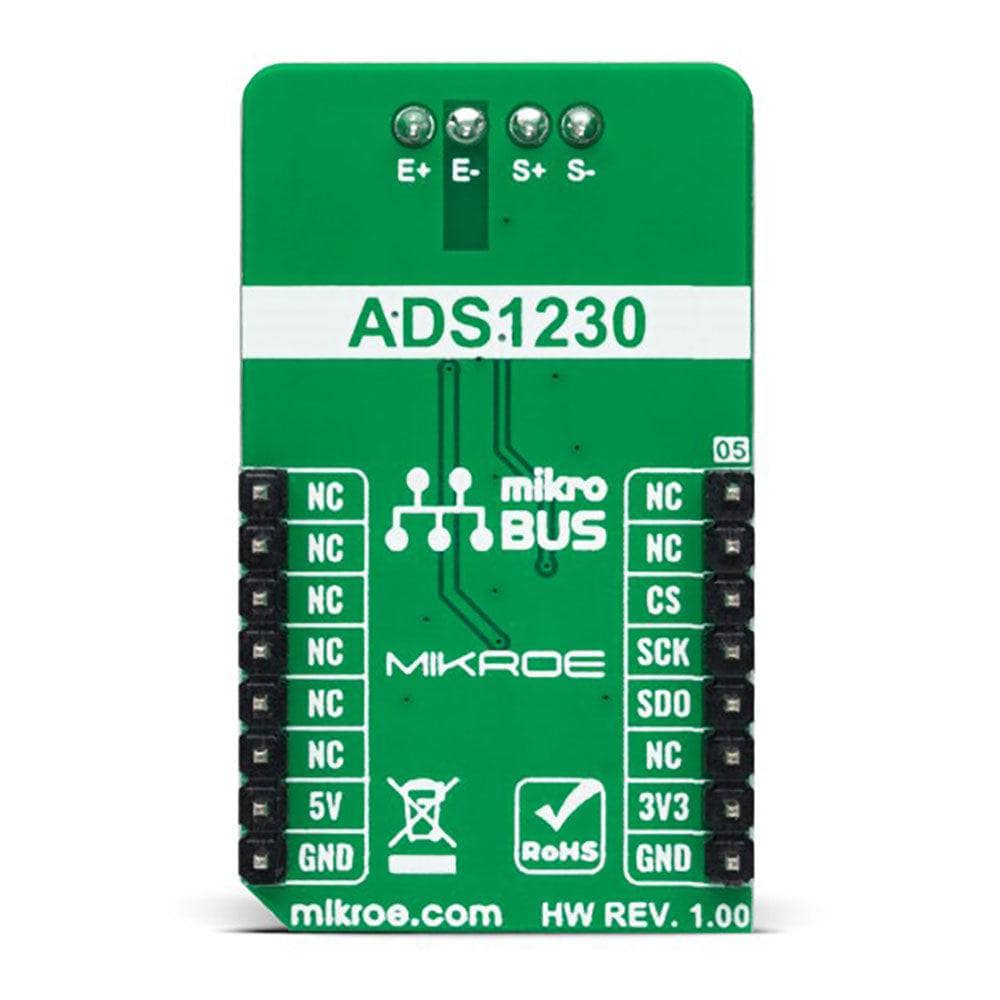
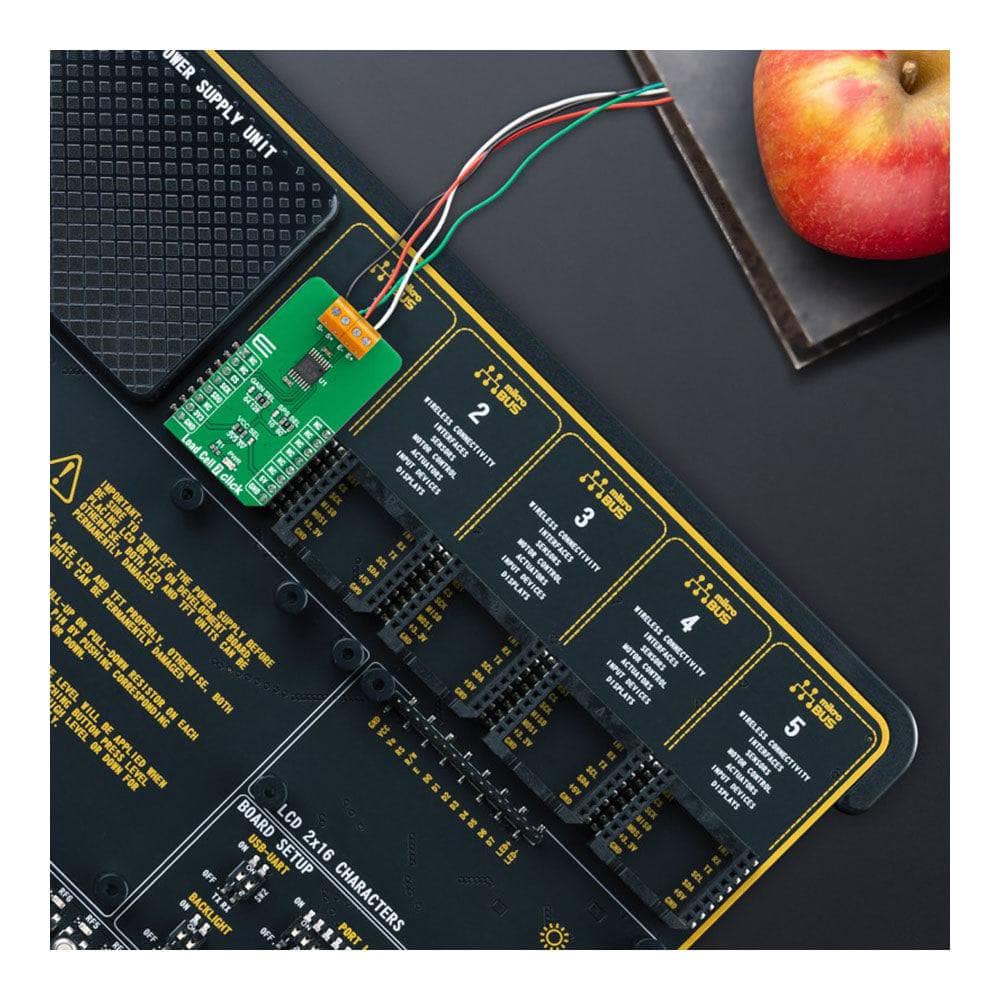
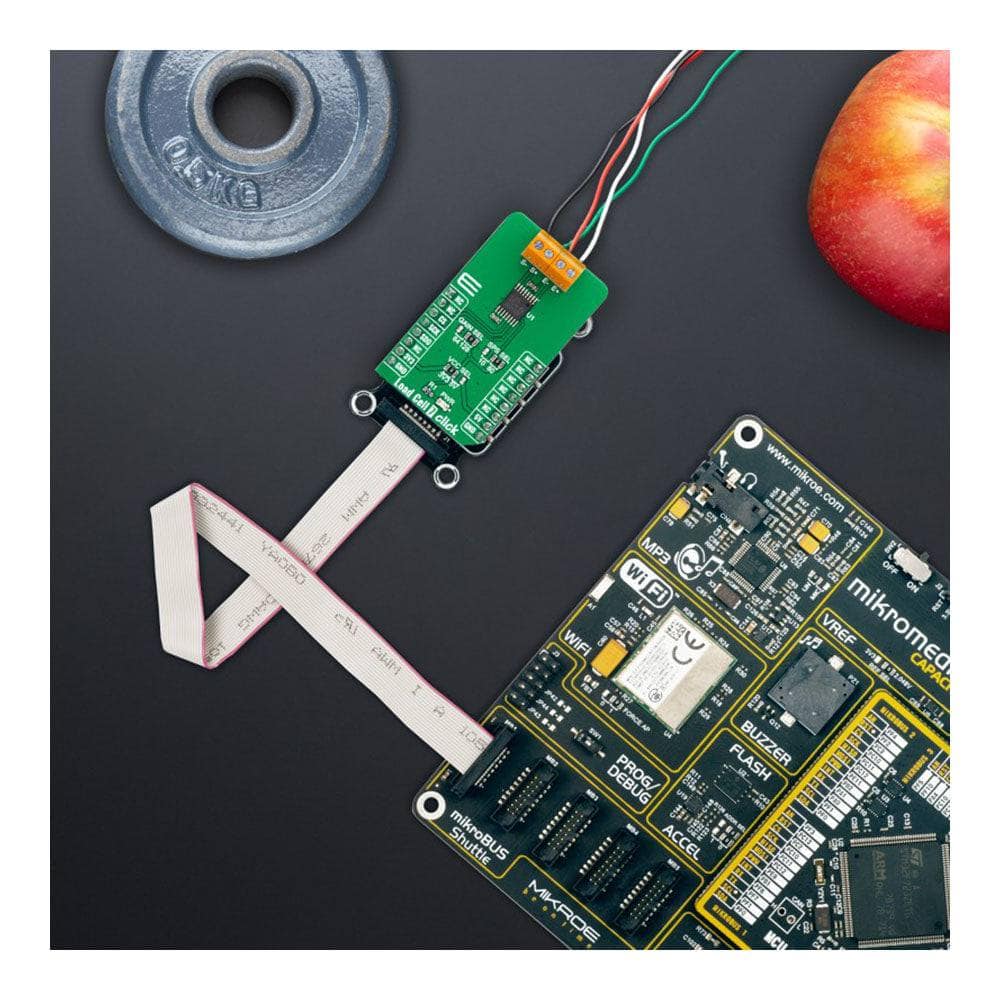
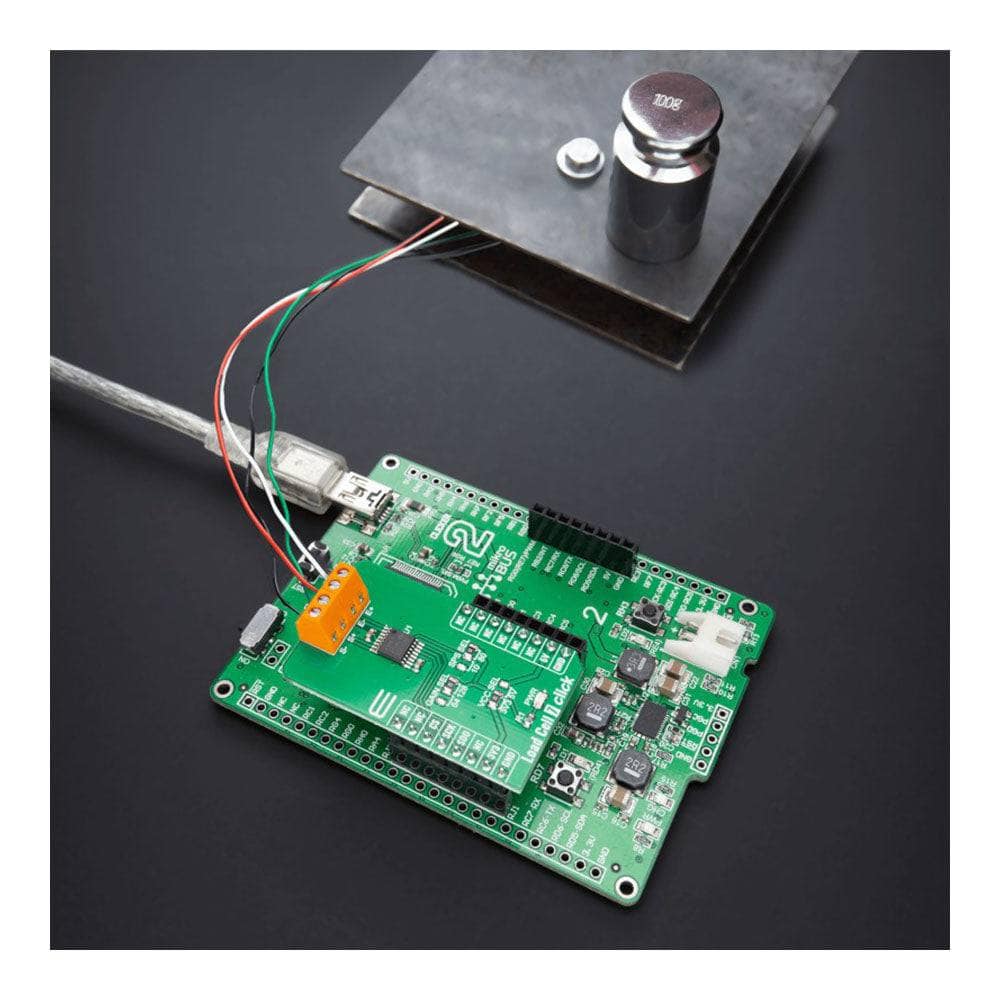
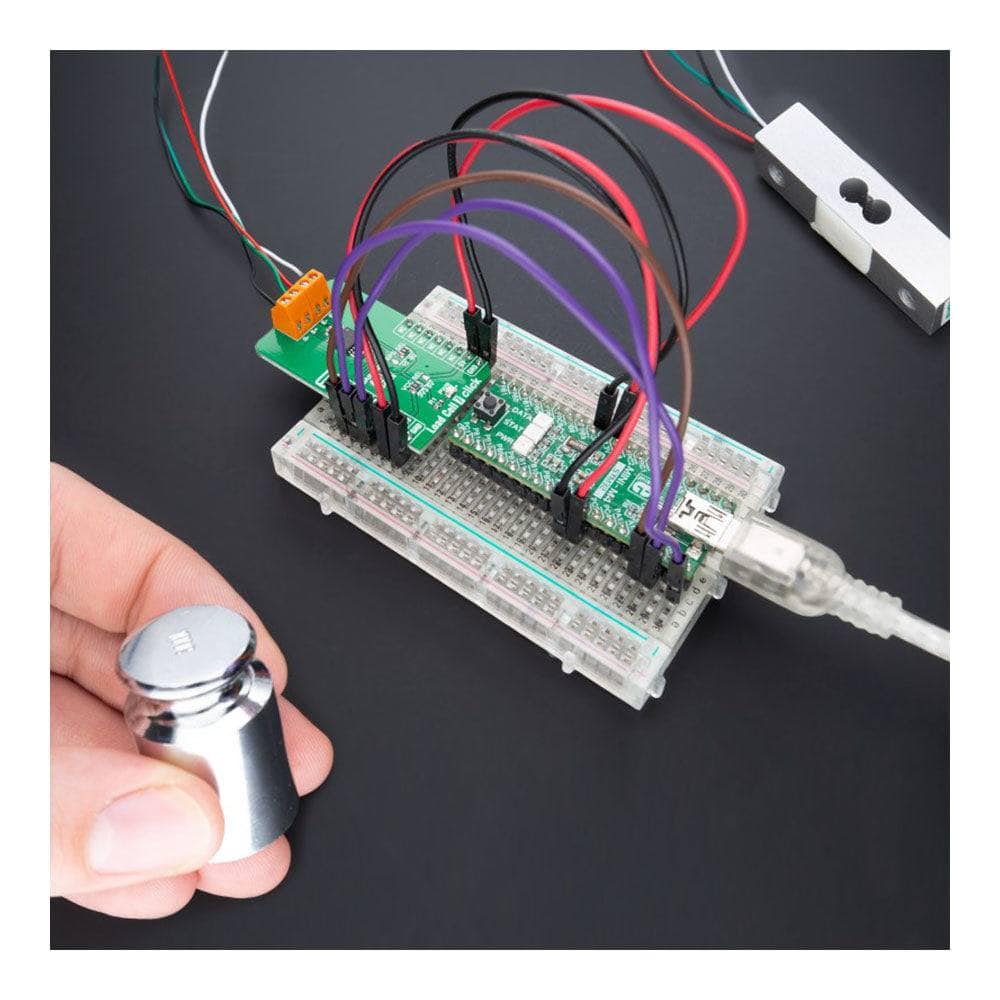
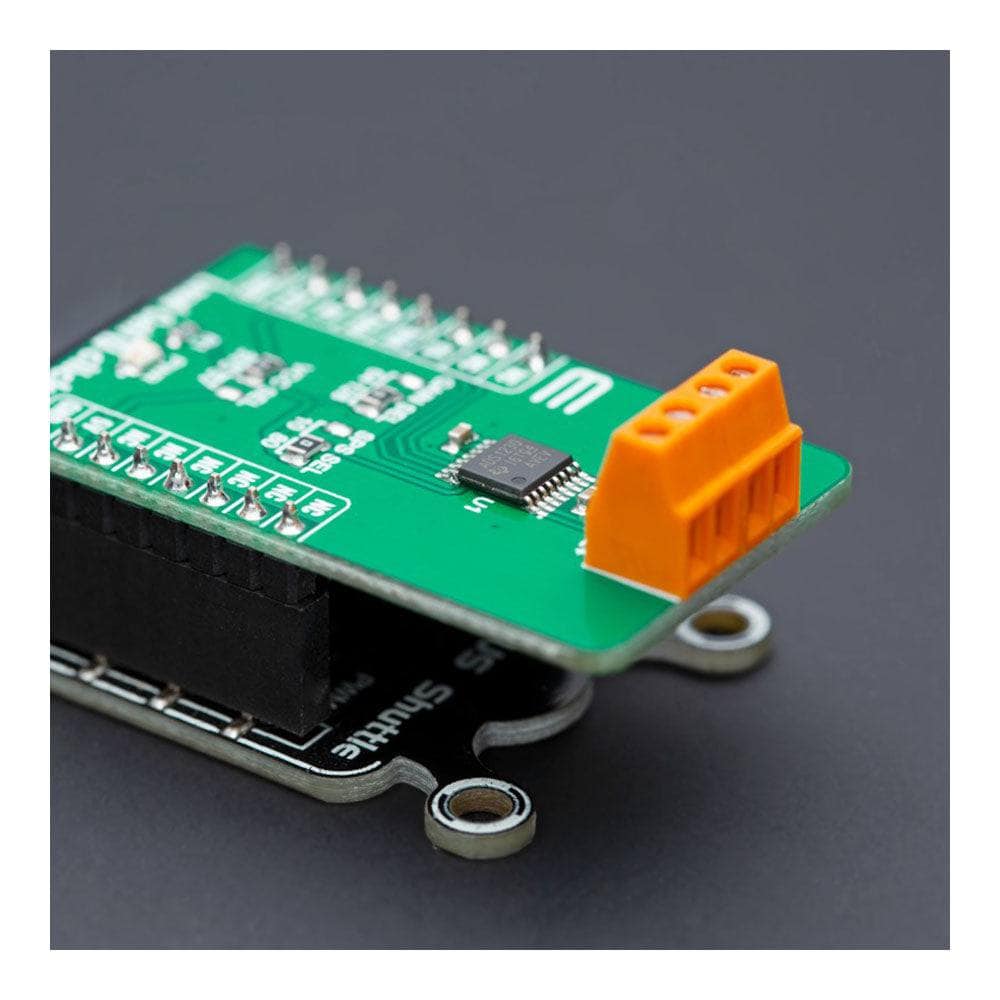
Key Features
Overview
The Load Cell 7 Click Board™ is a compact add-on board representing a weigh scale solution. This board features the ADS1230, a high-precision 20-bit delta-sigma analogue-to-digital converter (ADC) with an outstanding noise performance from Texas Instruments. This SPI-configurable ADC (read-only) offers selectable gain and data rate values, supporting a full-scale differential input of ±39mV/±19.5mV and 10SPS/80SPS, respectively. It comes with an onboard low-noise programmable gain amplifier (PGA) and onboard oscillator providing a complete front-end solution. This Click board™ has many features that make it a perfect fit for bridge sensor applications, including industrial process control, weigh scales, and strain gauges.
The Load Cell 7 Click Board™ is supported by a mikroSDK compliant library, which includes functions that simplify software development. This Click board™ comes as a thoroughly tested product, ready to be used on a system equipped with the mikroBUS™ socket.
Downloads
Die Load Cell 7 Click Board™ ist eine kompakte Zusatzplatine, die eine Waagenlösung darstellt. Diese Platine verfügt über den ADS1230, einen hochpräzisen 20-Bit-Delta-Sigma-Analog-Digital-Wandler (ADC) mit hervorragender Rauschleistung von Texas Instruments. Dieser SPI-konfigurierbare ADC (schreibgeschützt) bietet wählbare Verstärkungs- und Datenratenwerte und unterstützt einen vollwertigen Differenzeingang von ±39 mV/±19,5 mV bzw. 10 SPS/80 SPS. Es verfügt über einen integrierten rauscharmen programmierbaren Verstärkungsverstärker (PGA) und einen integrierten Oszillator, die eine vollständige Front-End-Lösung bieten. Diese Click Board™ verfügt über viele Funktionen, die sie perfekt für Brückensensoranwendungen machen, einschließlich industrieller Prozesssteuerung, Waagen und Dehnungsmessstreifen.
Das Load Cell 7 Click Board™ wird von einer mikroSDK-kompatiblen Bibliothek unterstützt, die Funktionen enthält, die die Softwareentwicklung vereinfachen. Dieses Click Board™ ist ein gründlich getestetes Produkt und kann auf einem System verwendet werden, das mit der mikroBUS™-Buchse ausgestattet ist.
| General Information | |
|---|---|
Part Number (SKU) |
MIKROE-5276
|
Manufacturer |
|
| Physical and Mechanical | |
Weight |
0.02 kg
|
| Other | |
Country of Origin |
|
HS Code Customs Tariff code
|
|
EAN |
8606027387982
|
Warranty |
|
Frequently Asked Questions
Have a Question?
Be the first to ask a question about this.

